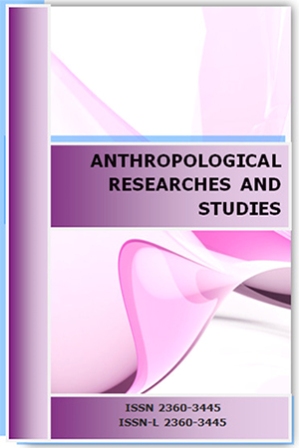High Risk of Postpartum Haemorrhage at Bouaké University Hospital (North-Central Côte D’Ivoire)
High Risk of Postpartum Haemorrhage at Bouaké University Hospital (North-Central Côte D’Ivoire)
Author(s): Zahouo Pascale Ghislaine Kouamé, Adou Serge Judicaël Anoua, N’Doumy Noël AbeSubject(s): Anthropology, Social Sciences, Psychology, Cultural Anthropology / Ethnology, Culture and social structure , Health and medicine and law
Published by: Institutul de Antropologie ,,Francisc I. Rainer” al Academiei Române
Keywords: postpartum haemorrhage;reproductive behaviour;high risk; obstetric emergency;maternal morbidity;Côte d’Ivoire;
Summary/Abstract: Objectives. Postpartum hemorrhage is one of several direct causes of maternal death in Côte d’Ivoire. It is recurrent in the department of gynecology and obstetrics at Bouaké University Hospital (CHU de Bouaké), but little is known to date about the underlying risk factors. The present study aims to describe the levels and trends displayed by the risk factors of postpartum hemorrhage before determining the contributing social factors in the aforesaid department. Material and methods. This study is retrospective in nature, concerning the period from 2014 to 2016. Data was obtained from delivery records and through individual interviews. The overall approach adopted is an anthropological one. Results. Postpartum hemorrhage is significant in light of its very high and increasing incidence (22.31%) among multiparous mothers. Within the latter category, fatal complications are a critical problem, with an annual average estimated at 35.98% and on the rise. The overall situation is alarming in view of this progressive deterioration. The persistence of the reproductive morbidity is attributable to various economic, social, cultural, and infrastructural factors. Conclusions. Communicational strategies are proposed as a type of community intervention conducive to social and behavioural change, with multiparous mothers as a priority target group, followed by older mothers in the medium term and by adolescent mothers in the long term. This should raise awareness about high-risk reproductive behaviours and practices as well as the environmental, economic, social, cultural, and infrastructural factors correlated to postpartum haemorrhage, with the ultimate goal of improving the quality and safety of reproductive practices.
Journal: Anthropological Researches and Studies
- Issue Year: 2021
- Issue No: 11
- Page Range: 78-91
- Page Count: 14
- Language: English

